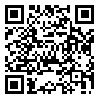Volume 5, Issue 2 (6-2023)
JAD 2023, 5(2): 19-24 |
Back to browse issues page
Download citation:
BibTeX | RIS | EndNote | Medlars | ProCite | Reference Manager | RefWorks
Send citation to:



BibTeX | RIS | EndNote | Medlars | ProCite | Reference Manager | RefWorks
Send citation to:
Vyas R, Upadhyay K. Horn anomalies in the blackbuck antelope Antilope cervicapra (Linnaeus, 1758) (Mammalia: Bovidae). JAD 2023; 5 (2) :19-24
URL: http://jad.lu.ac.ir/article-1-283-en.html
URL: http://jad.lu.ac.ir/article-1-283-en.html
1- Apartment, BPC-Haveli Road, Nr. Splatter Studio, Alakapuri, Vadodara – 390007, Gujarat, India , razoovyas@hotmail.com
2- 1/101 Avni Residence, Near Bansal Super Market, Gotri Vasna Road, Vadodara, Gujarat, India
2- 1/101 Avni Residence, Near Bansal Super Market, Gotri Vasna Road, Vadodara, Gujarat, India
Abstract: (5701 Views)
The blackbuck Antilope cervicapra (Linnaeus) is a grassland antelope widely distributed in Pakistan, Nepal, and India. Here we present a review of the known horn anomaly in the species followed by two new examples: a male with an abnormal right 'curled' horn and a female with a horn at the Blackbuck National Park, Velavadar, Bhavnagar District, Gujarat State, India. We also provide a photographic record of a female with horns in captivity.
Type of Study: Short Communication |
Subject:
Ecological Diversity
Received: 2023/02/25 | Accepted: 2023/06/11 | Published: 2023/06/30
Received: 2023/02/25 | Accepted: 2023/06/11 | Published: 2023/06/30
References
1. Bashistha, M., Neupane, B. K. and Khanal, S. N. (2012). Antelope cervicapra Blackbuck in Nepal: Population status, conservation and translocation issues of Blackbuck in the blackbuck conservation area, Bardiya, Nepal. Lap Lambert Academic Publishing, London, U.K. 92 pp.
2. Behera, S. K. and Mohanta, R. K. (2019). A survey of the abundance, population structure, and distribution of Blackbuck (Antilope cervicapra) using day ground surveys in Berhampur Forest Division, Area, Odisha. Annals of Ecology and Environmental Science, 3 (3): 1-4.
3. Chauhan, D. R. (1985). A female blackbuck with horns. Journal of the Bombay Natural History Society, 82: 188.
4. Csurhes, S. and Fisher, P. (2016). Blackbuck antelope, Antilope cervicapra. Department of Agriculture and Fisheries. Biosecurity Queensland, Australia. 13 pp.
5. Douhard, M., Pigeon, G., Festa-Bianchet, M., Coltman, D. W., Guillemette, S. and Pelletier, F. (2017). Environmental and evolutionary effects on horn growth of male bighorn sheep. Oikos, 126 (7): 1031-1041. [DOI:10.1111/oik.03799]
6. Fox, K. A., Diamond, B., Sun, F., Clavijo, A., Sneed, L., Kitchen, D. N. and Wolfe, L. L. (2015). Testicular lesions and antler abnormalities in Colorado, USA Mule deer (Odocoileus hemionus): a possible role for epizootic hemorrhagic disease virus. Journal of Wildlife Diseases, 51 (1): 166-176. [DOI:10.7589/2014-03-067] [PMID]
7. Groves, C. P. (1980). A note on geographic variation in the Indian Blackbuck (Antilope cervicapra Linnaeus, 1758). Record of Zoological Survey of India, 76: 125-138. [DOI:10.26515/rzsi/v76/i1-4/1980/161869]
8. Groves, C. and Grubb, P. (2011). Ungulate taxonomy. Johns Hopkins University Press, Baltimore, Maryland, USA. 317 pp. [DOI:10.56021/9781421400938]
9. Isvaran, K. (2007). Intra specific variation in group size in the blackbuck antelope: the role of habitat structure and forage at different spatial scales. Oecologia, 154 (2): 435-444. [DOI:10.1007/s00442-007-0840-x] [PMID]
10. IUCN SSC Antelope Specialist Group. (2017). Antilope cervicapra. The IUCN Red List of Threatened Species 2017: e.T1681A50181949. (Accessed 30 May 2023).
11. Jerdon, T. C. (1874). The mammals of India. John Wheldon, London, UK. 335 pp.
12. Jhala, Y. V. and Isvaran, K. (2016). Behavioural ecology of a grassland antelope, the Blackbuck Antelope cervicapra: linking habitat, ecology and behavior, In: Ahrestani, F. and Sankaran, M. (Eds.), The ecology of large herbivores in South and Southeast Asia. Springer Nature Publication, Dordrecht. pp. 151-176. [DOI:10.1007/978-94-017-7570-0_6]
13. Krumbiegel, I. (1955). Biologie der Saugetier, II. Agis-Verlag, Krefeld, Germany. 844 pp.
14. Lincoln, G. A. (1994). Teeth, horns and antlers: The weapons of sex, In: Short, R. V. and Bulaban, E. (Eds.), The difference between the sexes. Cambridge University Press, Cambridge, UK. pp. 131-158.
15. Long, J. L. (2003). Introduced mammals of the world: their history, distribution and influence. CSIRO Publishing, Collingwood, Australia. 487 pp. [DOI:10.1071/9780643090156]
16. Mallon, D. P. (2008). Antilope cervicapra. IUCN Red List of Threatened Species. IUCN. Version 2017-1. Available at: www.iucnredlist.org. Accessed 18 February 2023.
17. Mallon, D. P. and Kingswood, S. C. (2001). Antelopes. Part 4: North Africa, the Middle East, and Asia. Global Survey and Regional Action Plans. SSC Antelope Specialist Group. International :union: for Conservation of Nature (IUCN). Gland, Switzerland and Cambridge, UK. pp. 7-249.
18. Mandal, A. K. (1964). Some abnormal antlers and horns of deer and antelopes in the collections of Zoological Survey of India. Records of Zoological Survey of India, 62 (3-4): 223-226. [DOI:10.26515/rzsi/v62/i3-4/1964/161639]
19. Meena, R. and Saran, R. P. (2018). Distribution, ecology and conservation status of blackbuck (Antilope cervicapra): An update. International Journal of Biology Research, 3: 79-86.
20. Menon, V. (2014). Indian mammals: A field guide. Hachette Book Publishing (India) Pvt. Limited, Gurgaon, India. 406 pp.
21. Mungall, E. C. (1978). The Indian Blackbuck Antelope: A Texas View. The Caesar Kleberg Research Program in Wildlife Ecology. The Texas Agr. Expt. Station, Texas A and M University System, College Station, Texas. 184 pp.
22. Novillo, A. and Ojeda, R. A. (2008). The exotic mammals of Argentina. Biological Invasions, 10: 1333-1344. [DOI:10.1007/s10530-007-9208-8]
23. Prasad, N. L. N. S. (1983). Horn growth in blackbuck. Journal of the Bombay Natural History Society, 80: 634-635.
24. Ranjitsinh, M. K. (1989). The Indian Blackbuck. Natraj Publishers, Dehra Dun, India. 155 pp.
25. Simon, R., Drögemüller, C., and Lühken, G. (2022). The complex and diverse genetic architecture of the absence of horns (Polledness) in domestic ruminants, including goats and sheep. Genes, 13 (5): 832. [DOI:10.3390/genes13050832] [PMID] [PMCID]
Send email to the article author
| Rights and permissions | |
 |
This work is licensed under a Creative Commons Attribution-NonCommercial 4.0 International License. |







